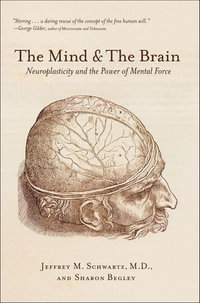FOREWORD TO THE SECOND EDITION.ACKNOWLEDGEMENTS.
1 INTRODUCTION AND GENERAL CONSIDERATIONS.
1.1 The CFD code.
1.2 Porting research codes to an industrial context.
1.3 Scope of the book.
2 DATA STRUCTURES AND ALGORITHMS.
2.1 Representation of a grid.
2.2 Derived data structures for static data.
2.3 Derived data structures for dynamic data.
2.4 Sorting and searching.
2.5 Proximity ins pace.
2.6 Nearest-neighbours and graphs.
2.7 Distance to surface.
3 GRID GENERATION.
3.1 Description of the domain to be gridded.
3.2 Variation of element size and shape.
3.3 Element type.
3.4 Automatic grid generation methods.
3.5 Other grid generation methods.
3.6 The advancing front technique.
3.7 Delaunay triangulation.
3.8 Grid improvement.
3.9 Optimal space-filling tetrahedra.
3.10 Grids with uniform cores.
3.11 Volume-to-surface meshing.
3.12 Navier???Stokes gridding techniques.
3.13 Filling space with points/arbitrary objects.
3.14 Applications.
4 APPROXIMATION THEORY.
4.1 The basic problem.
4.2 Choice of trial functions.
4.3 General properties of shape functions.
4.4 Weighted residual methods with local functions.
4.5 Accuracy and effort.
4.6 Grid estimates.
5 APPROXIMATION OF OPERATORS.
5.1 Taxonomy of methods.
5.2 The Poisson operator.
5.3 Recovery of derivatives.
6 DISCRETIZATION IN TIME.
6.1 Explicit schemes.
6.2 Implicit schemes.
6.3 Awordof caution.
7 SOLUTION OF LARGE SYSTEMS OF EQUATIONS.
7.1 Direct solvers.
7.2 Iterative solvers.
7.3 Multigrid methods.
8 SIMPLE EULER/NAVIER???STOKES SOLVERS.
8.1 Galerkin approximation.
8.2 Lax???Wendroff (Taylor???Galerkin).
8.3 Solving for the consistent mass matrix.
8.4 Artificial viscosities.
8.5 Boundary conditions.
8.6 Viscous fluxes.
9 FLUX-CORRECTED TRANSPORT SCHEMES.
9.1 The FCT Concept.
9.2 Algorithmic implementation.
9.3 Steepening.
9.4 FCT for Taylor???Galerkin schemes.
9.5 Iterative limiting.
9.6 Limiting for systems of equations.
9.7 Examples.
9.8 Summary.
10 EDGE-BASED COMPRESSIBLE FLOWSOLVERS.
10.1 The Laplacian operator.
10.2 First derivatives: first form.
10.3 First derivatives: second form.
10.4 Edge-based schemes for advection-dominated PDEs.
11 INCOMPRESSIBLE FLOWSOLVERS.
11.1 The advection operator.
11.2 The divergence operator.
11.3 Artificial compressibility.
11.4 Temporal discretization:projection schemes.
11.5 Temporal discretization: implicit schemes.
11.6 Temporal discretization of higher order.
11.7 Acceleration to the steady state.
11.8 Projective prediction of pressure increments.
11.9 Examples.
12 MESH MOVEMENT.
12.1 The ALE frame of reference.
12.2 Geometric conservation law.
12.3 Mesh movement algorithms.
12.4 Region of moving elements.
12.5 PDE-based distance functions.
12.6 Penalization of deformed elements.
12.7 Special movement techniques for RANS grids.
12.8 Rotating parts/domains.
12.9 Applications.
13 INTERPOLATION.
13.1 Basic interpolation algorithm.
13.2 Fastest 1-timealgorithm:brute force.
13.3 Fastest N-time algorithm: octree search.
13.4 Fastest known vicinity algorithm: neighbour-to-neighbour.
13.5 Fastest grid-to-grid algorithm: advancing-front vicinity.
13.6 Conservative interpolation.
13.7 Surface-grid-to-surface-grid interpolation.
13.8 Particle???grid interpolation.
14 ADAPTIVE MESH REFINEMENT.
14.1 Optimal-mesh criteria.
14.2 Error indicators/estimators.
14.3 Refinement strategies.
14.4 Tutorial: h-refinement with tetrahedra.
14.5 Examples.
15 EFFICIENT USE OF COMPUTER HARDWARE.
15.1 Reduction of cache-misses.
15.2 Vector machines.
15.3 Parallel machines: general considerations.
15.4 Shared-memory parallel machines.
15.5 SIMD machines.
15.6 MIMD machines.
15.7 The effect of Moore???s law on parallel computing.
16 SPACE-MARCHING AND DEACTIVATION.
16.1 Space-marching.
16.2 Deactivation.
17 OVERLAPPING GRIDS.
17.1 Interpolation criteria.
17.2 External boundaries and domains.
17.3 Interpolation: initialization.
17.4 Treatment of domains that are partially outside.
17.5 Removal of inactive regions.
17.6 Incremental interpolation.
17.7 Changes to the flow solver.
17.8 Examples.
18 EMBEDDED AND IMMERSED GRID TECHNIQUES.
18.1 Kinetic treatment of embedded or immersed objects.
18.2 Kinematic treatment of embedded surfaces.
18.3 Deactivation of interior regions.
18.4 Extrapolation of the solution.
18.5 Adaptive mesh refinement.
18.6 Load/flux transfer.
18.7 Treatment of gaps or cracks.
18.8 Direct link to particles.
18.9 Examples.
19 TREATMENT OF FREE SURFACES.
19.1 Interface fitting methods.
19.2 Interface capturing methods.
20 OPTIMAL SHAPE AND PROCESS DESIGN.
20.1 The general optimization problem.
20.2 Optimization techniques.
20.3 Adjoint solvers.
20.4 Geometric constraints.
20.5 Approximate gradients.
20.6 Multipoint optimization.
20.7 Representation of surface changes.
20.8 Hierarchical design procedures.
20.9 Topological optimization via porosities.
20.10 Examples.
References.
Index.??
























